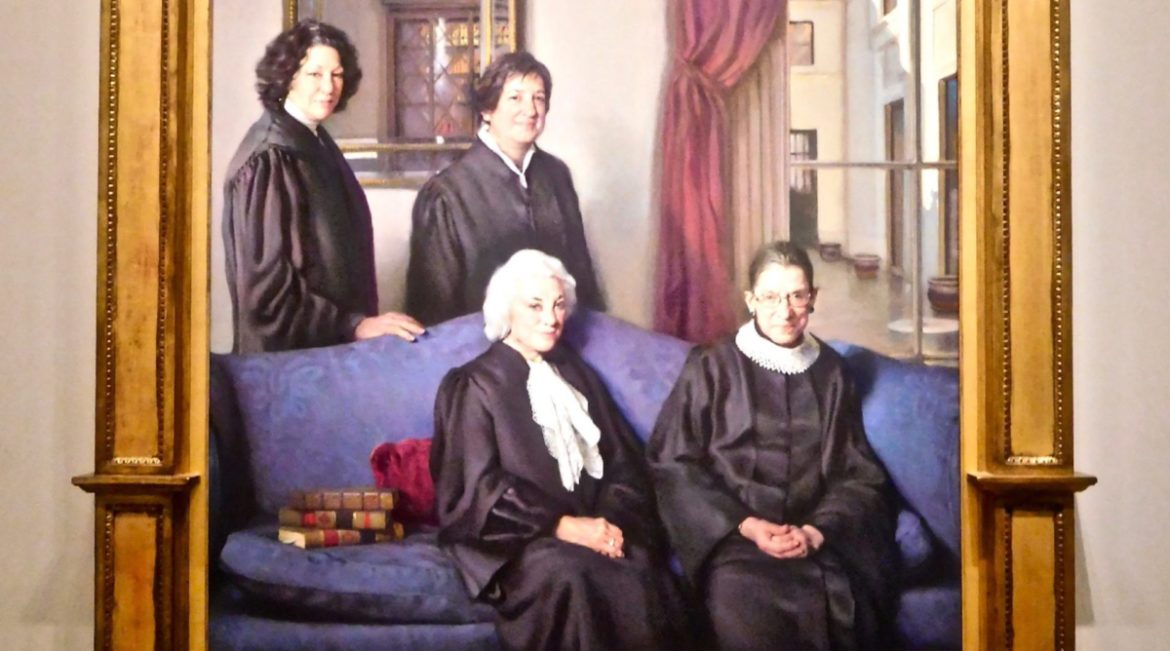The National Portrait Gallery was founded in 1962 with a mission of telling the story of America by portraying the people who shaped the nation’s history, development, and culture. Today, it houses an impressive collection that ranges from the portraits of every American president to modern artwork.
The National Portrait Gallery works to capture the people who left their footprint on America. This footprint is not a temporary one, pressed in the sand awaiting the next wave to wash it away. Rather, it is an indelible mark on our nation– one that will last long past one lifetime. These portraits are not merely paintings; they are an attempt to illustrate the very soul of the person. It is truly remarkable to see paints and oils that are meaningless on their own, transform together into something more, into someone more. The National Portrait Gallery plays a unique role in our preservation of American history as it works to ensure that we do not just remember the biographies of people who made an impact on America. It strives to guarantee that we will remember their faces as well. Within the walls of the museum lie numerous paintings, each representing an essential part of American history. One relatively recent piece of artwork has gained a special place in the hearts of many– Nelson Shanks’s The Four Justices.
The Four Justices arrived at the National Portrait Gallery on October 28, 2013. In this masterpiece, Shanks worked to commemorate the impact of the first four female justices on the Supreme Court of the United States, Justices Sandra Day O’Connor, Ruth Bader Ginsburg, Sonia Sotomayor and Elena Kagan.
Justice O’Connor, who was the first woman to sit on the Supreme Court, was appointed by President Ronald Reagan in 1981. Following O’Connor, Justice Ginsburg was appointed by President Bill Clinton in 1993. President Barack Obama appointed Justices Sotomayor and Kagan in 2009 and 2010, respectively. Each of these justices are different in their own way. They came from different backgrounds, they held different beliefs, but there is one uniquely similar aspect between all four women– they are trailblazers.
These four justices have, in every sense of the word, earned their place on the highest court in the country. They fiercely broke into a field long dominated by men with their own strength and values in tow. They have served most selflessly as an inspiration for both men and women across the country and the world. They have served most vigilantly as an advocate for justice and rule of law in America. They have served most loyally to each other as anchors of support when faced with trying times.
The time on the bench for these four justices has not been without trials and tribulations. In their own way, they have all faced gender discrimination or other barriers to their success. In the face of these challenges, these women did not bow out. Instead, they bolstered each other up and provided one another with a sense of solace and companionship amid a seemingly never-ending spotlight.
During their time on the Supreme Court, Justice O’Connor first battled breast cancer and then, Justice Ginsburg battled colon cancer. When Justice Ginsburg was asked what the best piece of advice she received from her colleagues was during this trying time, she responded with a story of Justice O’Connor, who had advised her to schedule her chemo appointments on Friday in order to guarantee that she could be prepared and well enough to come to the court on Monday. This tactic is one that O’Connor herself had used. This story is just one example of the sheer dedication and resilience that shone through in all of these women’s accomplishments.
Engraved across the exterior of the Supreme Court are the words “equal justice under law.” These words are a hopeful promise to the general public and a solemn reminder to the esteemed people who work inside the imposing doors of the nation’s top court. They serve as a constant symbolic gesture to the serious oath the justices take as both justice and freedom are a part of the very foundation of our nation. These four women have played a critical role in protecting and upholding this oath.
Today, there are four women on the Supreme Court. Of the women painted in The Four Justices, Justices Sotomayor and Kagan are still serving. Justice O’Connor retired from the bench in 2006, and Justice Ginsburg passed away in 2020. While the makeup of the Supreme Court has changed, these four justices are enshrined in our memory forever.
It is of paramount importance that we continue to recognize and honor the women who have helped build our country in order to honor their legacies, but also to encourage young women across America that they too can make such an impact. Nelson Shanks’s The Four Justices in the National Portrait Gallery will continue to do just that.

